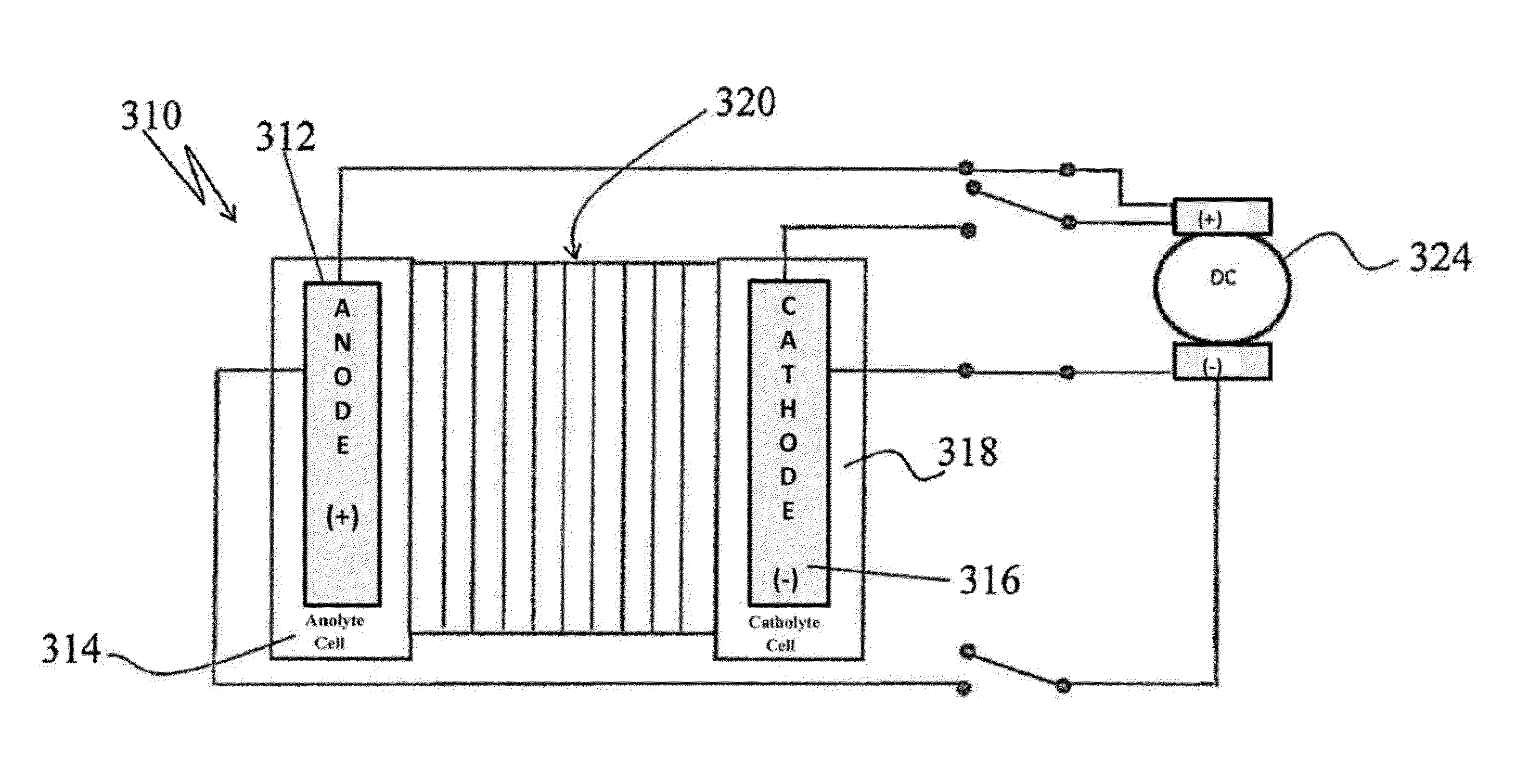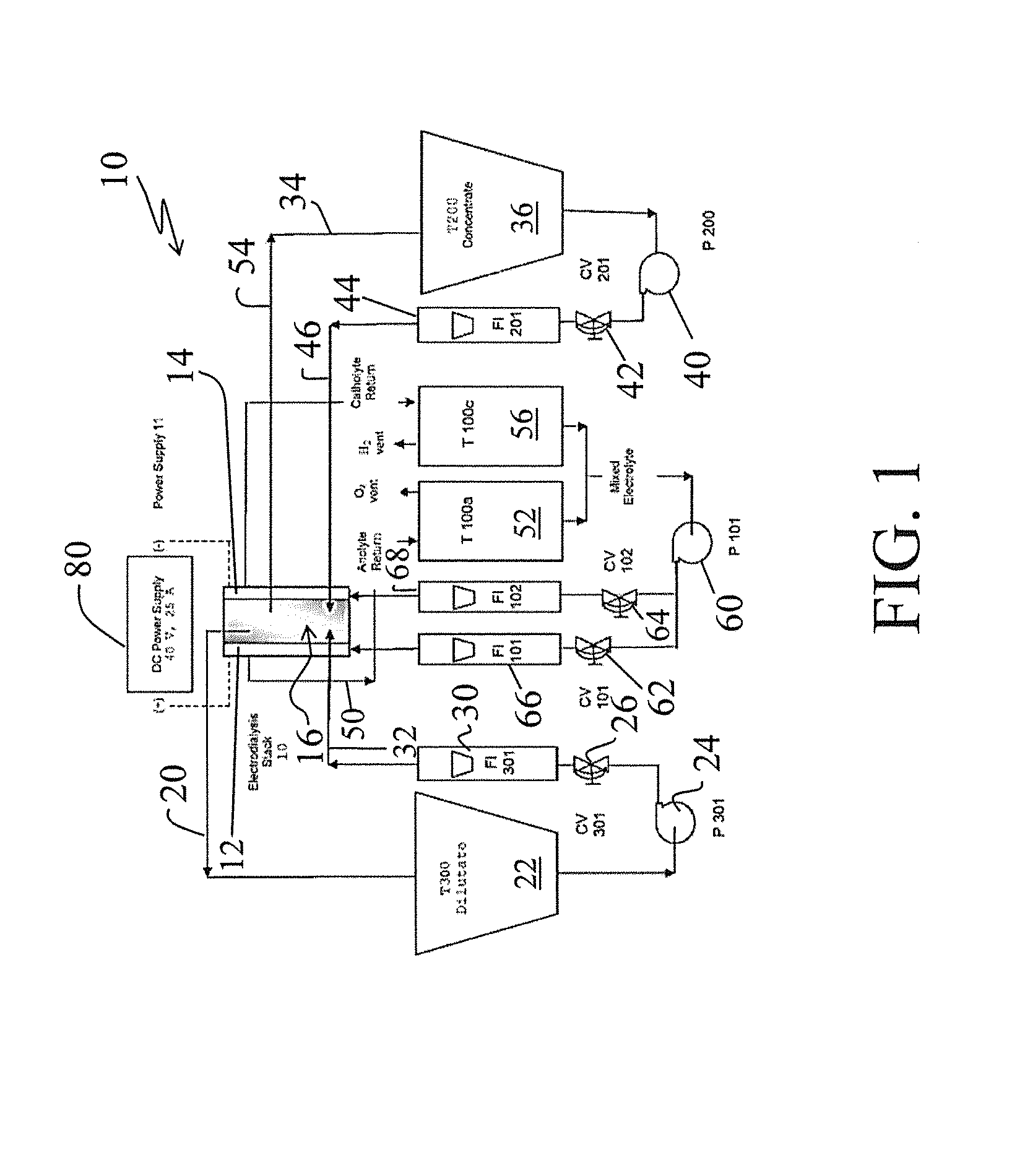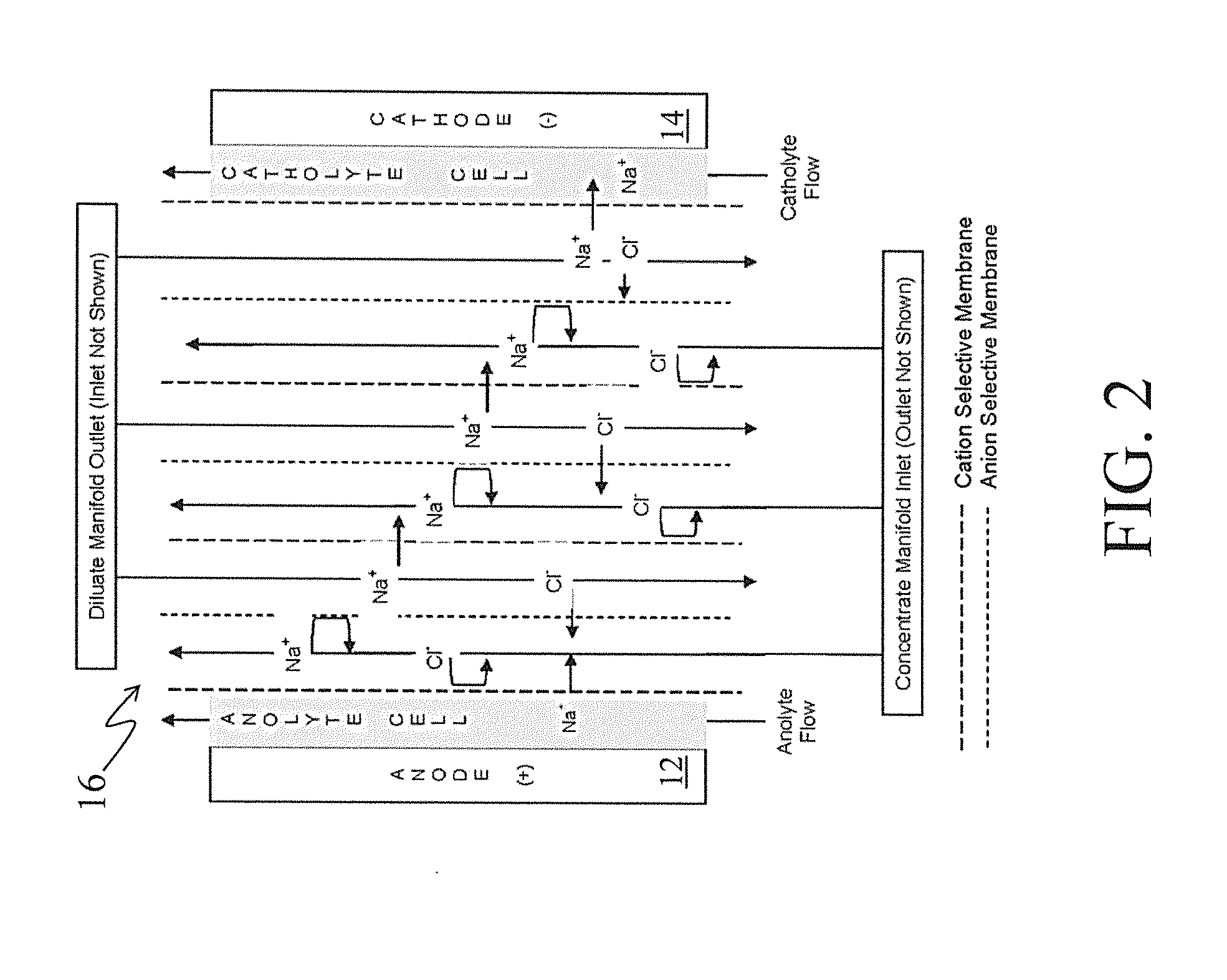Electrolyte chemistry and improved stack performance in high brine concentration electrodialysis
a high brine concentration, electrolyte technology, applied in the field of electrolysis, can solve the problems of preventing efficient ion transfer, unable to proceed with electrolyte, affecting the efficiency of ion transfer, etc., and achieve the effects of improving stack performance and electrolyte chemistry, improving electrodialysis, and improving electrolyte chemistry
- Summary
- Abstract
- Description
- Claims
- Application Information
AI Technical Summary
Benefits of technology
Problems solved by technology
Method used
Image
Examples
Embodiment Construction
[0039]The present invention provides improved electrodialysis and, more particularly, improved stack performance and electrolyte chemistry and in high brine concentration electrodialysis.
[0040]Turning to FIG. 1, there is shown a simplified flow diagram of an electrodialysis pilot plant, generally designated by the reference numeral 10, in accordance with one aspect of the invention. Main components of the electrodialysis plant 10 include an anode electrode cell 12, a cathode electrode cell 14 and a membrane stack (also sometimes simply referred to as a “stack”) 16 appropriately disposed between the anode and the cathode cells.
[0041]The membrane stack 16 is shown in greater detail in FIG. 2 and described further below.
[0042]As shown in FIG. 1, the diluate recovered from the membrane stack 16 is passed via a line 20 and is collected in a diluate tank 22. A pump 24, a control valve 26, and a rotometer 30 are used to appropriately deliver and control the flow of diluate via a line 32 to...
PUM
 Login to View More
Login to View More Abstract
Description
Claims
Application Information
 Login to View More
Login to View More - R&D
- Intellectual Property
- Life Sciences
- Materials
- Tech Scout
- Unparalleled Data Quality
- Higher Quality Content
- 60% Fewer Hallucinations
Browse by: Latest US Patents, China's latest patents, Technical Efficacy Thesaurus, Application Domain, Technology Topic, Popular Technical Reports.
© 2025 PatSnap. All rights reserved.Legal|Privacy policy|Modern Slavery Act Transparency Statement|Sitemap|About US| Contact US: help@patsnap.com



